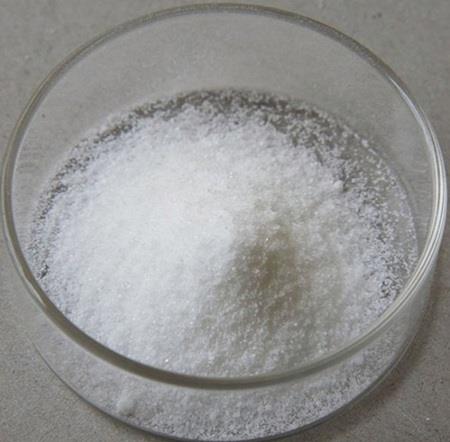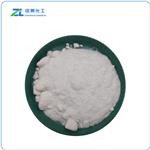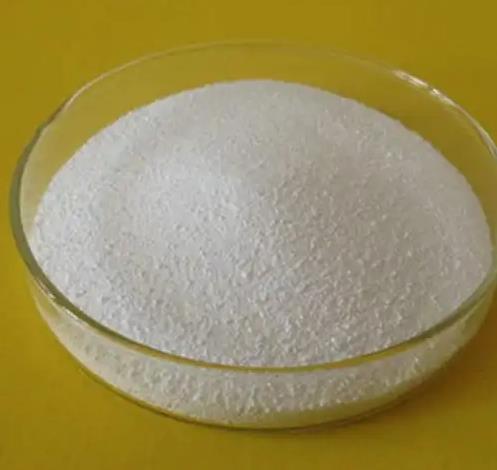Tetraethylammonium bromide: properties and toxicity
Introduction
Tetraethylammonium bromide (TEAB;Figure 1) is a quaternary ammonium compound introduced into medical investigation as a vasodilator. It acts by blocking the transmission of vasoconstrictor impulses in autonomic ganglia, and has been used in cases of peripheral vascular disease to assess the capacity for vasodilatation.

Pharmacodynamics
Tetraethylammonium (bromide) is a vasodilator because it blocks autonomic ganglia and prevents signals carrying vasoconstrictor impulses from proceeding.
Mechanism of action
Tetraethylammonium bromide's mechanism of action is still being investigated, but it is known that it blocks autonomic ganglia, calcium- and voltage- activated potassium channels, and nicotinic acetylcholine receptors.
Toxicity
In Animals
In 7 out of 20 dogs toxic effects were noted. The first signs of these appeared after tetraethylammonium bromide had been given fora period of two to three and a half hours: paralysis ofintercostal breathing developed, and respiration continued with irregular diaphragmatic movements of diminished strength and frequency. Prominent features were bradycardia and hypertensive change with increased pulse rate-characteristics of the effect of anoxia in dogs. Cyanosis was also apparent. In two animals, when tetraethylammonium bromide was stopped a gradual return to the previous state occurred over a period of one to one and a half hours. The remaining five died. In three of them normal respirations almost ceased, an anoxic hypertensive state followed, and death occurred 15, 20, and 60 minutes later respectively;during this time the few respiratory efforts were feeble and jerky in nature and entirely diaphragmatic, but as a result of movements of the heart some diffusion of air in and out of the lungs occurred. In the other two a slow rise in systemic blood pressure and in pulse pressure was followed by sudden respiratory failure and death.At post-mortem examination the only positive finding was gross dilatation of the heart and large veins.
In Man
Seven subjects undergoing investigation were given tetraethylammonium bromide intravenously in doses of 250-500 mg. in two to four minutes. In six no abnormal reactions occurred. The remaining subject,a healthy woman aged 22, developed paralysis of curariform type after being given 300 mg of tetraethylammonium bromide intravenously over two minutes. The pulse rate immediately rose from 70 to 80. After 15 minutes she became drowsy,was unable to speak or to raise her upper eyelids, and showed loss of power in neck and arm muscles with periodic twitchings of limb muscles. There was paralysis of intercostal respiration; diaphragmatic respiratory movements increased in magnitude, affecting blood-flow tracing in the foot, and the respiratory rate rose from 18 to 30a minute. The skin colour remained good. The drowsiness deepened into a state in which there was no response to questions or commands. When the eyelids were lifted up the pupils were found to be moderately dilated with loss of light reflex, and both eyes rolled irregularly.During this time the blood pressure rose from 126/86to 136/90, and there was a rise both in blood flow and in skin temperature in the hand, and a transient but not marked rise in the foot. An hour after injection the subject could partly open her eyes, and after tilting her head backwards could count fingers. Power of hand muscles and of speech was returning, though cerebration.was still very slow. Two hours after injection walking was possible. There were no further after-effects.
Studies in animals and humans have reported cases of serious muscle paralysis, which can lead to respiratory distress and death.Out of 20 dogs to which tetraethylammonium bromide was administered in large doses seven died-five from curariform paralysis of intercostal and diaphragmatic muscles, and two probably from central respiratory paralysis. A similar but not fatal curariform paralysis in man is reported.[1]
In terrestrial plants
The evaluation of the effect of tetraethylammonium chloride and bromide on the growth and development of terrestrial plants clearly confirmed phytotoxicity of the applied QAS. The toxicity level was correlated with the compound concentration and plant species. Monocotyledons - spring barley - were more susceptible to applied salts in the pot experiment, which was confirmed by % inhibition of seedling length, root length and fresh weight; roots of spring barley appeared to be the most susceptible organs to both QAS. Common radish - representing dicotyledons - Is a highly resistant plant to tetraethylammonium chloride and tetraethylammonium bromide. Obtained EC50 values for inhibited radish length of plants, their roots and also decreased fresh weight oscillated between 3000 and 4000 mg of compound per kg of dry weight of soil. Such a high concentration of chemical compounds in natural environment is not present in the field,which proves that both QAS might cause small damages in dicotyledons. Simultaneously, it should be pointed out that tetraethylammonium bromide was less toxic for both plants compared to tetraethylammonium chloride.[2]
References
[1] GRAHAM AJ. Toxic effects in animals and man after tetraethylammonium bromide. Br Med J. 1950;2(4674):321-322. doi:10.1136/bmj.2.4674.321
[2] Pawłowska B, Biczak R. Evaluation of the effect of tetraethylammonium bromide and chloride on the growth and development of terrestrial plants. Chemosphere. 2016;149:24-33. doi:10.1016/j.chemosphere.2016.01.072
You may like
See also
Lastest Price from Tetraethylammonium bromide manufacturers

US $10.00/kg2025-04-21
- CAS:
- 71-91-0
- Min. Order:
- 1kg
- Purity:
- 99%
- Supply Ability:
- 100 mt

US $80.00-18.00/kg2025-04-15
- CAS:
- 71-91-0
- Min. Order:
- 1kg
- Purity:
- 99%
- Supply Ability:
- 20ton


